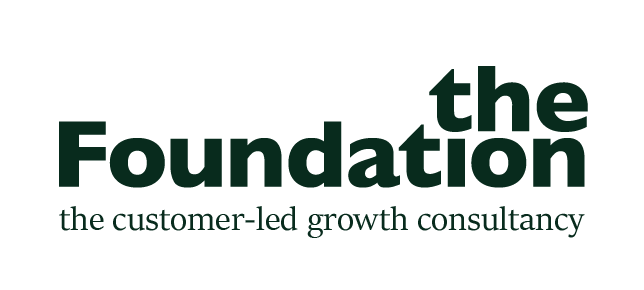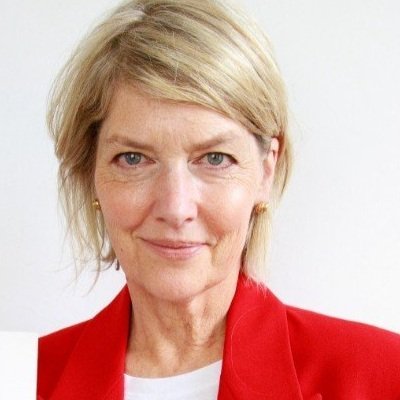The Pioneer interview with... Clare Richmond
Clare started her career in media and marketing. After 15 successful years in radio, publishing, and television, she took an unexpected path.
She decided to rescue the local high street without a budget, team, relevant experience or permission. She brought together the local community’s independent businesses, who were paralysed by the challenge of facing sophisticated competition with limited resources. She encouraged them to work together on the things they could control, and as they realised they could do something, their confidence grew, and the limitations became an inspiration. This led to the creation of the Crouch End Project.
In 2009, following overwhelming interest in her approach to solving complex problems with limited resources, Clare founded SpeakTo, a leadership practice helping people overcome these kinds of challenges by adopting a Scavenger Mindset, the title of her recently completed book.
What was the Crouch End Project? What happened, and what was achieved?
In 2007, my local High Street was struggling with declining footfall, with the online shopping boom and changing customer expectations. It was clear to me that what was once central to the locality had lost its energy, and the community was in danger of losing something special. I was curious to understand what, if anything, could be done about it.
With no budget, experience or resources, I began by simply speaking to the local shop owners and business people to find out what they felt they could be. I began to realise that the first and biggest challenge in approaching this was a mindset one, not a marketing challenge as I had assumed.
To keep their customers and get back to growing, they needed to think differently about who they were and what they could be. They needed to stop looking for others to blame, often the local authority, and concentrate on what they could do where they had influence. They could affect the service, the welcome they gave customers and the offer of personal attention. However, I could see that far more could be achieved by working together.
We created a simple plan, re-thinking the idea of the local high street as an opportunity to do something for the community, not simply for people as customers. The shopkeepers got into action, creating an open evening in which they welcomed locals into shops for a drink and a chat, with local kids playing music and decorating shop windows, giving it all the sense of something special happening. We produced merchandise to sell in the evening to raise money, promote the project and reinforce the sense of place. It worked brilliantly.
So brilliantly that they wanted to do it again. This led to a succession of community events, which quickly built momentum, attracting interest from other organisations in the neighbourhood, including local schools, the local hospital, and the library.
The project quickly became a trusted local brand, and when we eventually went online, we received an amazing response from the community. The interest we received from the community through the site illustrated a level of connectivity that amazed me and made me realise how much can be achieved with so little.
It was less about selling and more about creating a sense of place and community, driven by the businesses and the community itself.
The success of the project was due in part to the simple truth that no one wants to live in a ‘ghost town’, so any purposeful, considered initiative that added new energy and value would be welcomed.
Before, there were fewer and fewer reasons to go to the High Street. Now, there was a different kind of engagement, and people went out of their way to support their local shops and businesses.
Within 18 months, the Crouch End Project had worked with over 100 local businesses and organisations, attracting attention from further afield.
What were the projects that followed? What happened, and how was it different?
What followed was almost the complete opposite. It coincided with the global financial crisis and a growing realisation that town centres were actually quite important! Mary Portas had written a white paper on the future of our High Streets, and the government was taking notice, putting money behind town regeneration schemes.
After the success of the Crouch End Project, I was asked by numerous local authorities to help them replicate its success in their town centres.
Where the Crouch End Project had started with zero resources and by necessity had worked with existing resources, government-led initiatives began with a big budget, a gathering of experts around a table, and clear outcomes preordained. This left little time for discovery and proper engagement. The mindset was one of ‘experts coming in to do something, solve a problem’, disconnecting local people, especially business owners, from developing their sense of possibility and responsibility.
The huge budgets necessitated ambitious targets, including reducing unemployment and vacancies in 18-month cycles. Being seen to achieve these targets became the chief focus, which meant often missing emerging opportunities and addressing hidden challenges.
Most importantly, at the end of the planned work, there was a sense from the council that they’d ‘done the job’ and ‘ticked the box’. Although some of the work was a success, the top-down approach meant they failed to secure vital ground-up support and involvement from the people they needed most. My concern was that when the initiative finished, when the ‘circus left town’, what would the legacy be, and where would responsibility lie if the problem of decline still existed?
They didn’t unlock the resources and opportunities, the energy and enthusiasm that was there if the approach had been different.
Everyone wanted the same outcome, but the conventional top-down approach stifled potential and reinforced the sense that the responsibility and the solution lay outside the community instead of being a shared concern.
How have things developed since these early projects? What have you learned?
Most of my learning came from the projects that followed the first one. I realised how powerful the approach to the Crouch End Project had been. I felt a profound frustration that huge reserves of skill, time, enthusiasm and opportunity were overlooked, and a vast amount of money was being spent without sustainable change or impact being achieved.
I realised the problem was essentially the leadership approach: the ‘we’re in control’ mindset. To understand how this approach could be adopted by leaders in more conventional organisations and businesses, I undertook an MA in leadership.
To my delight, I discovered that this Crouch End approach was not unusual. There were leaders all over the world adopting a similar approach to a wide range of businesses, from corporations to communities, and experiencing outstanding success. Whilst a diverse group, I identified a common mindset that I later called ‘ The Scavenger Mindset’. A mindset that was marked by its resourceful, focused approach to making better use of existing resources and finding new levels of innovation in the process.
The two types of Scavenger leaders faced different challenges. The ‘Scanners’ working in established hierarchical frameworks needed to change behaviours and mindsets and had to build confidence and capacity from within.
The Scourers, who started with nothing, had the challenge of attracting support and retaining support without any of the usual enticements and demonstrated how when people feel properly valued, money is less important in motivation.
Through this, I saw how much more people are capable of when leaders focus on creating conditions for a high-performance environment, conditions freely available to all and with the ability to build foundations for long-term growth and innovation.
What does pioneering on behalf of customers mean to you? Why do organisations find it so hard?
Customer pioneering means investing in building relationships that will stay with you over time - meeting not just short-term needs but interrogating long-term needs and opportunities beyond the boundaries of established expectations. Being actively engaged in learning, challenging assumptions and innovating whilst remembering that humans need to feel connected and valued, any organisation that can achieve that will have customers for life.
The real risk in life is to stand still and become distracted by shiny technological red herrings. True pioneers understand the need to be crystal clear about their direction but are open to the route that gets them there, remembering that innovation is always born premature, so it needs time and space to work.
Are there any examples of organisations that you particularly admire for doing something customer-led?
In December last year, my oven stopped working. I contacted the company I bought the kitchen from (Wren) to find the contact details for the oven manufacturer. They gave me the number and then called me back to ensure I had an appointment with the engineers.
But the most incredible thing happened when they heard the engineer was booked in so close to Christmas Day. They called me back and said, ‘We cannot have you worrying about Christmas. We will send you a new oven, which will arrive on Saturday. Is that okay with you?’
The fact they went out of their way to make sure I was happy showed they cared about their relationships with their customers, and I was blown away by it.

